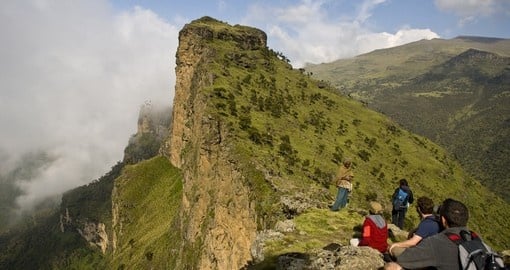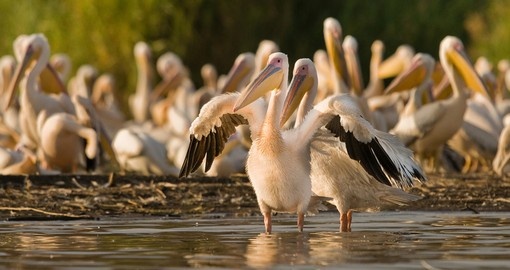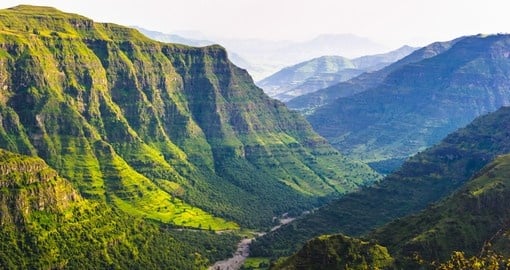Ethiopia Nature & Wildlife
Ethiopia’s geography provides various diverse landscapes from mountains to lakes that provide habitats for many different plant and animal species. It is home to many of the East African plain animals except for giraffes and buffalo. There are ten national parks in Ethiopia concentrating on the conservation of the country’s flora and fauna as well as an additional fourteen major wildlife reserves found within the parks and around the country.
The habitats of Ethiopia host more than 270 mammals including lions, elephants, gazelle, antelope, ibex, hyenas and zebras. Baboons and other monkey species are also found around the country. The nation has a reputation for being one of the best birdwatching locations in Africa, laying claim to over 800 species, of which, twenty are endemic to the country. These bird populations are in part due to the lakes in the Great Rift Valley region.
Established in 1966, Awash National Park, located in Ethiopia’s lowlands, is the country’s oldest national park. Covering an area of 827 square kilometres, it hosts approximately 350 bird species including ostriches, birds of prey and more. Zebras, cheetahs and leopards can be found in the park, though they are hard to spot. More common mammals in Awash include the Beisa Oryx, the Soemmerrings Gazelle and wild pigs while the Awash River is home to crocodiles and hippopotamus. Located in the centre of the park is Fantale, a dormant volcano that reaches 2007 m (6584.64 ft) high.
Three years after Awash National Park was created, Simien Mountains National Park was designated as a protected area. It naturally hosts the Simien Mountains, one of the major mountain massifs in Africa. Located in the Simien Gondar Zone of the Amhara Region, it boasts Ras Dashen, Ethiopia’s highest peak. At 4,620 m (15157.48 ft), it is the fourth-highest peak in Africa. Some of Ethiopia’s endemic species live in the park including the Walia Ibex, the Simien Fox and the Gelada Baboon. In 1978, the park became one of UNESCO’s first World Heritage Sites.
Abiata-Shalla National Park, established in 1974, is a haven for birds and birdwatchers alike. It covers 887 square kilometres that include two Rift Valley Lakes, Lake Abiata and Lake Shalla. These lakes provide food sources for many bird species with Lake Shalla hosting over 400 species alone. While birdlife is abundant here, the park is also known for its hot springs located on the northeast corner of Lake Abiata. Along with the hot springs, Lake Abiata is known for its flamingo populations.
The above-mentioned parks are only a sampling of the diverse nature and wildlife available in Ethiopia’s protected areas and around the country. Stunning landscapes and geography abound in Ethiopia and are waiting to be discovered.
Get a Trip Quote Order a Brochure



















